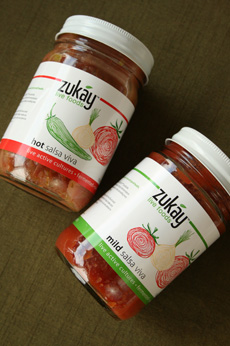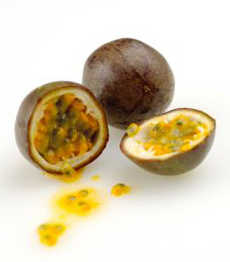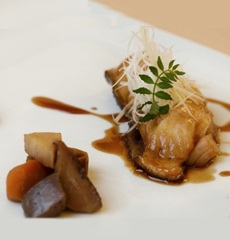|
Labné or labneh (pronounced LOB-nay or LOB-neh) is the Lebanese version of cream cheese: yogurt cream cheese. It isn’t made with vegetable gum and shaped into a brick like American cream cheese. Rather, it’s thicker than yogurt and comes in a container the size of a large yogurt.
Labné is packed with live cultures (beneficial bacteria), calcium and protein. The flavor is refreshing and slightly tart. The cheese is popular throughout the Eastern Mediterranean and Middle East.
In Lebanon, labné is most commonly served as a staple of the breakfast table. In the U.S. it is more often used as a dip for veggies, pita or crusty bread.
If you enjoy yogurt, give it a try.
HOW TO SERVE LABNE
On toast and bagels (its slight tartness is a delightful complement to jam).
|
|

Labne or labneh. Photo courtesy iGourmet. |
|
As a dip with toasted pita: Serve on a plate or shallow bowl, make a depression in the middle of the labné with a soup spoon, fill the depression with extra virgin olive oil, sprinkle the whole surface with chopped fresh mint leaves, thyme or paprika and surround with black Mediterranean olives. For color, you can decorate with strips of roasted red pepper.
Serve with chopped mint as a side to roast lamb or lamb chops.
Use it as a base for canapés, instead of cream cheese or sour cream.
In fact, labné can be substituted for cream cheese and sour cream in many recipes. It has fewer calories, and since it is not heated after incubation, the active yogurt cultures remain live.
The thick, rich yogurt cheese is produced by straining yogurt. Once the whey is removed, the firm yogurt solids (curds) that remain are called cheese.
Fresh cheese is a category of unaged cheeses with a high moisture content that are typically direct set with the addition of lactic acid cultures. The cheeses have a creamy, soft texture and fresh, sweet flavor. Fresh cheeses include cottage cheese, cream cheese, Neufchatel, panir, ricotta and the cheeses listed in the first bullet below. The cheeses can be made from any type of milk. Uncomplicated in flavor, fresh cheeses are often used in cooking, for breakfast or with fruit for dessert. They are not made to age, and should be consumed quickly.
Labné is sold in many supermarkets and in Middle Eastern and international markets. You can also prepare it at home with yogurt, cheesecloth and a colander.
Check out some other fresh cheeses, including creme fraiche, fromage blanc, mascarpone, queso blanco, queso fresco and quark.
Discover many types of cheese in our Cheese Glossary.
|




